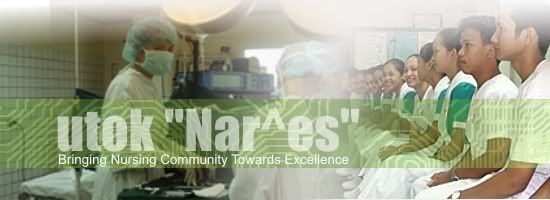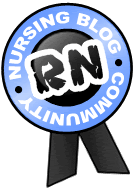PREBOARD EXAMINATION - PREBOARD QUESTIONS
MEDICAL SURGICAL NURSING
1. Ulcer that results 72H after severe burns?
a. Cushing’s Ulcer
b. Pressure Ulcer
c. Curling’s Ulcer
d. Peptic Ulcer
2. Shock associated with massive dilatation of blood vessels
a. Cardiogenic shock
b. Neurogenic shock
c. Vasogenic shock
d. Hypovolemic shock
3. For a client with quadriplegia, which nursing intervention is a priority?
a. Forcing fluid to prevent renal calculi
b. Obtaining adaptive devices for more independence
c. Prevent atelectasis
d. Provide skin care
4. Normal value for tidal volume?
a. 500ml
b. 1000ml
c. 1500ml
d. 2000ml
5. An elderly client with pneumonia may appear with which of the following symptoms first?
a. Altered mental status and dehydration
b. Pleuritic chest pain and cough
c. Fever and chills
d. Hemoptysis and dyspnea
6. Which substances are most likely to cause gastritis?
a. Milk
b. Baking soda
c. Enteric coated aspirins
d. NSAIDs
7. After a hypophysectomy, vasopressin is given IM to?
a. Prevent GI bleeding
b. Prevent SIADH
c. Reduced cerebral edema and lower ICP
d. Replace ADH normally secreted from the pituitary
8. Nursing management of a client with pulmonary embolism focuses on which of the following actions
a. Assessing oxygenation status
b. Monitoring the oxygen delivery device
c. Monitoring for other sources of clot
d. Determining whether the client requires another ventilation perfusion scan
9. Which assessment finding would indicate that a client’s abdominal ascites are decreasing?
a. The amount of ankle edema remains the same
b. Abdominal skin becomes shinier
c. Urine output increases
d. The pulse rate increase overtime
10. The physician prescribes Phenergan for a client who is being prepared for surgery. What’s the purpose of the drug?
a. To provide sedation
b. To inhibit oral secretions
c. To prevent bleeding problems
d. To enhance wound healing
11. After a client has a sigmoidoscopy, the nurse should observe for which potential complication of this procedure?
a. Muscle atony of the colon
b. Fissure of the anal sphincter
c. Perforation of the intestinal wall
d. Intestinal hyperactivity
12. Which action by the nurse may help prevent UTI in a client who is in labor?
a. Provide Ice chips
b. Encourage to void frequently
c. Test urine for glycosuria
d. Provide frequent perineal care
13. A client is receiving Digoxin. Which adverse effect should the nurse observe?
a. Blurred vision
b. Hand tremors
c. Urine retention
d. Hearing loss
14. The nurse is obtaining history from a client with suspected PUD. Which history finding is most likely to contribute to ulcer devt?
a. The client takes Ibuprofen daily for arthritic pain
b. The client operates a photocopy machine 8H per day, 5days a week
c. The client has been on strict vegetarian diet
d. The client has a history of psoriasis
15. Which electrolyte disturbance commonly follows a thyroid surgery
a. Hypercalcemia
b. Hypokalemia
c. Hypocalcemia
d. Hyperkalemia
16. When preparing to administer NPH insulin to a client, the nurse should take which action?
a. Rotate the vial between hands
b. Warm the vial to body temperature by running hot water over it
c. Invert the vial for a few minutes
d. Aspirate the insulin without injecting air into the vial
17. The client is admitted to the hospital with a diagnosis of acute GI bleeding. Which nursing diagnosis takes highest priority for this client?
a. Deficient fluid volume related to bleeding
b. Impaired tissue integrity related to mucosal damage
c. Impaired physical mobility related to weakness secondary to blood loss
d. Anxiety related to critical illness.
18. The nurse encourages a post operative client to move his legs. Contracting the leg muscles help to prevent which post operative complication?
a. Pleurisy
b. Portal hypertension
c. Hypostatis pneumonia
d. Pulmonary embolism
19. A client with heart failure is maintained on bed rest. For this client, the main purpose of bed rest is to
a. Improve the hearts pumping action
b. Enhance oxygenation on body tissue
c. Decrease blood volume throughout the body
d. Reduce the workload of the heart
20. After a cholecystectomy with coledochostomy, a client returns to the medical-surgical unit with a T- tube in place. The nurse should take which action related to the tube?
a. Irrigate it periodically
b. Connect it to a straight drainage system
c. Attach it to a low suction apparatus
d. Aspirate it at least four times a day.
21. When obtainin a history from a client with choletihiasis stone in gallbladder, the nurse should ask which question related to this disorder?
a. Are you more comfortable when you sleep in a sitting position?
b. Do you get heartburn after a spicy meal?
c. do you have intolerance to fatty foods?
d. Do you have less flatus after taking an antacid?
22. The nurse is able to identify factors that lead to respiratory problems. The primary function of the nurse is
a. To detech early signs for early treatment
b. To mobilize field workers to meet parents
c. To refer severe cases to district hospital
d. To teach the mother to recognize early signs and symptoms of pneumonia
23. In case of asthmatic attack what position can a nurse advice patient to take?
a. side lying
b. semi-fowlers
c. lying down in bed
d. prone
24. As a nurse, you know that there are elements that provoke the attack. Which among the elements is common to both children and adults?
a. Dust-mites
b. flowers
c. perfume
d. cigarette smokes
25. Which statement by a woman newly diagnosed with NIDDM demonstrates to the nurse an adequate understanding of dietary intake?
a. I need tostick to the meal plan the dietician explained to me
b. I usuallyhave two to three drunks with dinner and i understand its okey to continue doing this
c. I should only buy foods that are labeled "diabetic" from now on"
d. It is okey to skip lunch on my shopping days as i ner have time to eat
26. The nurse is preparing a room to receive a client post-thyroidectomy. The nurse should be sure that which of the ff. equipment is available at bedside?
a.Nasogastric tray
b. Central venouse tray setup
c. thraecheostomy try
d. Lumbar punchture tray
27. The nurse is completing an admission assessment on a clietn with benign prostatic hyperplasia. The nurse should obtain an in-depth assessment about?
a. laboratory studies
b. urinary patterns
c. eletrocardiograms
d. internal bleeding
28. The client with hepatitis A may be anicteric and symtomless. The nurse recognizes that if sympthoms are present early in hepatic inflammatory disorder, the most likely symptoms is
a. dark urine
b. ascites
c. occult blood in the stoll
d. anorexia
29. The nurse administers the clients morning dose of regular insulin at 7:30AM. The nurse should anticipate to observe for hypoglycemic reaction at which of the ff. times?
a. immediately
b. 10:00 am
c. 1:00pm
d. 7:30pm
30. A client immidiately post kidney transplant should be assessed by the nurse for:
a. fluid and electrolyte imbalance
b. infection
c. hepatotoxicity
d. respiratory complications
31. An adult has been diagnozed with colon cancer. The nursing assessment would most likely reveal:
a. epigastric pain that intensifies when the stomach is empty
b. Stools that are fatty and foul smelling
c.Alternating episodes of diarrhea and constipation
d. A rigid board like abdomen
32. A client with diverticulosis is admitted to the hosp. The nurse can expect that this client will be placed on?
a. A bland, low residue diet
b. a low-protein, high carbohydrate diet
c. a soft but high fiber diet
d. saline cathartics to increase intestinal peristalsis
33. On a medical-surgical unit, a clientis admitted with acute renal failure. The nurse must continually assess for:
a. hyponatremia and hyperkalemia
b. decreased BUN and creatinine
c. alkalosis
d. hypercalcemia
34. A nursing diagnosis appropriate for a client who has ulcerative colitic is:
a. abdominal pain. related to decreased peristalsis
b. Diarrhea related to hyperosmolar intestinal content
c. excess fluid volume related to increased water absorption by intestinal mucosal
d. activity intolerance related to fatique
35. An adult has developed peritonitis related to perforatedduodenal ulceration. During the nursing assessment, the nurse would expect to find.
a. decreased or absent bowel sound
b. colicky abdominal pain
c. high pitched bowel soulds
d. alternative episodes of constipation and diarrhea
36-100 Coming soon! Enjoy!






No comments:
Post a Comment